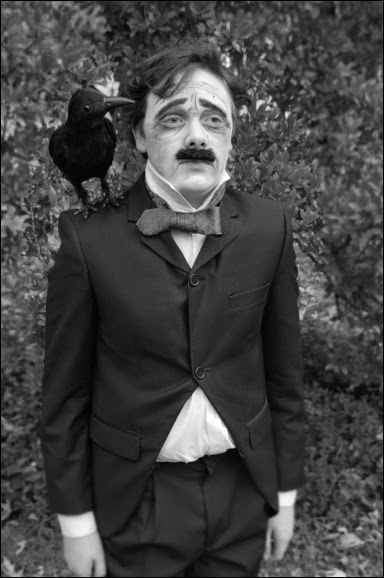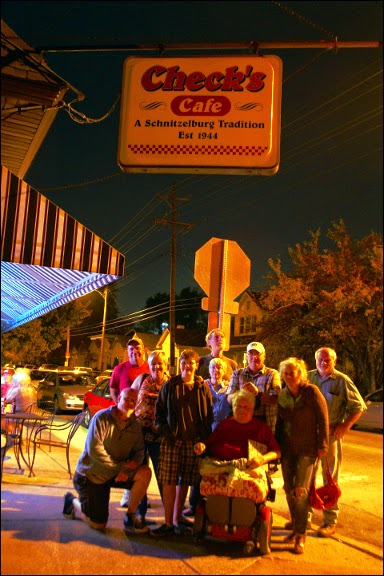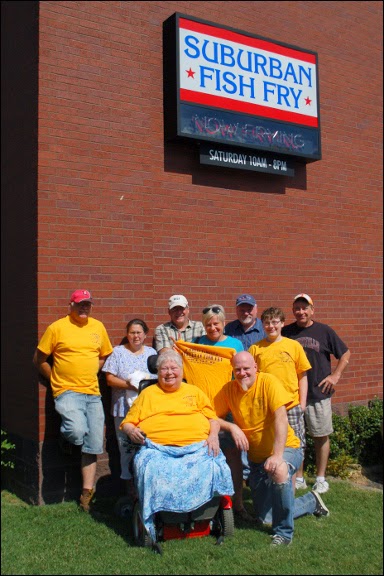The second day of our War of 1812 --Year Three-- Kick-Ass Immersion Pilgrimage© was centered around
Old Fort Niagara. The consensus of the Fife Clan is that this fort is definitely among the best we have visited . . . and we have toured more than a few. It possesses the triumvirate of all great fortifications . . . location, architecture, and history. Of course, that is our own personal criteria/viewpoint, but I beg you to differ in opinion in regard to this structure. Do not doubt me!
As proof, I submit to you
The French Castle . . . built in 1726, it is reputed to be the oldest surviving building in the Great Lakes region. It has been restored to represent its appearance during French occupation. Here I should note, a good many of the War of 1812 sites we visit overlap with other historical events . . . for example, in Canada you will come across sites and references to the Canadian Rebellion and the Fenian Raids. In the US you might encounter the French and Indian War, or the Revolutionary War. All that to say, this place is no exception.
Our visit coincided with a French and Indian War Encampment and Reenactments of
La Belle Famille/Woods Battle and the Siege and Surrender of Fort Niagara by the French to the English. As this deals with another time period we will return to it later in the entries devoted to sites we saw that were apart from the War of 1812. But that is not to say that there is not much to relate about
Fort Niagara during the War of 1812. By the way, you might notice that the date of 1678 in the above photo does not jibe with the date of 1726 I gave in the previous picture. That is because the date on the emblem, which is on the French Castle, denotes the date of the actual first structure, Fort Conti. Of course, 1759 is when the French surrendered the fort to the British.
Now, when talking about the War of 1812, the strategic location of the fort, which is situated at the mouth of the Niagara River, guaranteed that this would be a place of interest . . . especially given that the British had two forts,
Fort George and Fort Mississauga, just across the river. In the early years of the war, it served mainly as a base of operations. However, given the ugly history of the region: both sides campaigning to lay waste to all, be it a legitimate military objective or homes of the general populace, some kind of action was bound to transpire here.
Dr. J and Dudeboy praying that the British will be lenient when they attack? I daresay, a lot of the US troops were praying that the British wouldn't give as good as they got, for what transpired up to this point and led to the British attack on Fort Niagara was not one of the United State's finer moments (and that is saying something!).
Of course, what I am alluding to is the
Burning of Newark (now known as Niagara-on-the-Lake) by US troops when they abandoned Fort George in December, 1813. US troops had occupied Fort George and Newark since May of that year. However, as their situation was becoming untenable with US invasions checked at Stoney Creek and Beaver Dams (both in June of 1813), the worst of winter to come, the poor condition of the few soldiers left to defend, and an approaching British force bent on retaking the fort, it was decided to withdraw to Fort Niagara.
This is where things get murky . . . with the retreat, Newark was put to torch. Ultimately the blame must lay with US Brigadier General George McClure. Whether through incompetency by allowing/ignoring
Canadian Volunteers under the command of American sympathizer
Joseph Willcocks to settle old scores, or by outright intent this was nothing but guerrilla warfare. I do think the concluding line in Wilcocks' wikipedia bio to be telling, "Willcocks lies in an unmarked grave, ignored by the country he fought against and forgotten by the country he fought for."
So, objectives had changed, with the British going on attack (bolstered with the incentive of obtaining a bit of retribution for the Burning of Newark). That isn't to say the capture of Fort Niagara was the only objective. The British under Lieutenant-General Gordon "
Drummond undertook a campaign during the winter of 1813-14, in which the American frontier was laid to waste."
The South Redoubt . . . this is one place where the British encountered much actual resistance. The fort had been neglected and fallen into disrepair. Couple that with "a small party of negligent American pickets (who) were surprised while playing cards at a local tavern and forced at bayonet point to reveal the fort's password"* the British managed to gain control over much of the fort . . . the exception being a group of defenders barricaded in the South Redoubt. Those who were encountered were put to the bayonet.
Casualties for the US amounted to up to 80 killed, 14 wounded, and over three hundred captured. Compare that with only 6 killed and 5 wounded for the British. Payback's a b!tch.
This is the massive (24' x 28') original garrison flag that had been captured by the British. From an
online article about the flag:
The road back to Niagara has been long and arduous for the colors the British captured on that frigid night, Dec. 19, 1813. A month later, an aide to Maj. Gen. Sir Gordon Drummond, the commander of the British forces in Upper Canada, arrived in Quebec to present the flag — the trophy — to Sir George Prevost, British commander-in-chief of North America. In May 1814, Prevost shipped the Niagara flag to London where it was laid before the feet of the Prince Regent, later King George IV. It is generally believed that the Prince Regent returned the Fort Niagara flag to Gen. Drummond, whose family home was in Scotland. There it remained on display in a hallway for decades.
The flag has suffered over the years with a fire and such, but it has been preserved and returned to Old Fort Niagara. Note that it is a "Kentucky flag" . . . 15 stars and 15 stripes.
Before leaving the area, we drove back to Buffalo and visited the
Buffalo History Museum and their exhibit,
By Fire & Sword: War in the Niagara Theatre, 1812-1814. It was small but interesting exhibit about the area during the War of 1812. It included some artifacts pertaining to the US Brig Niagara and battlefield finds, like the above powder horn found at the Chippawa battlefield.
A relief from the museum's facade portraying Perry giving the Brits hell.
*
The War of 1812: A Guide to Battlefields and Historic Sites by Grant and Jones























































